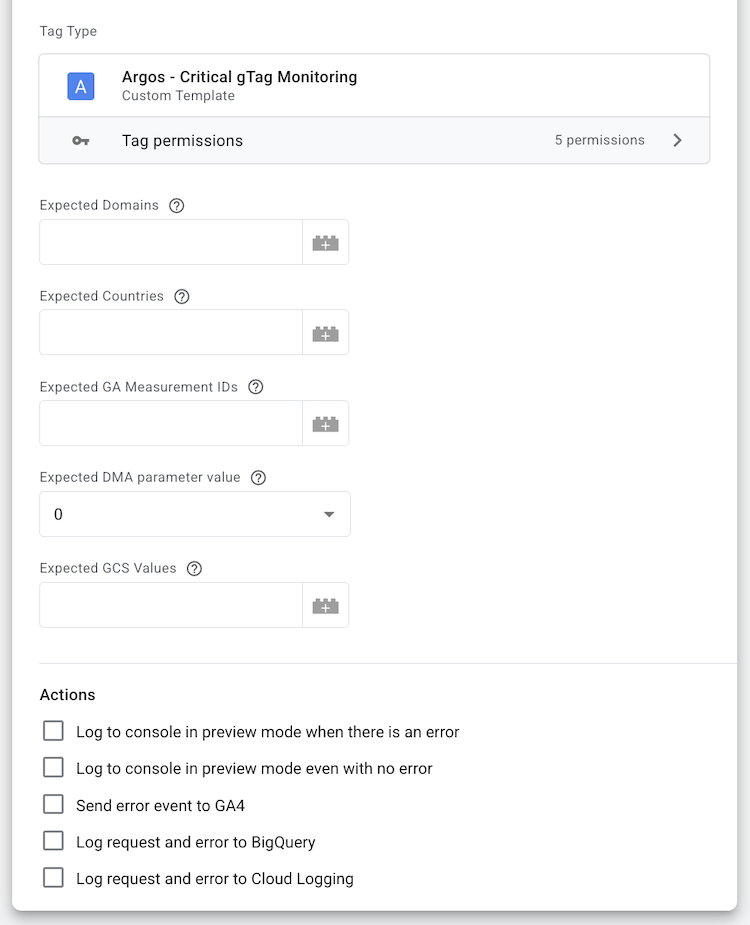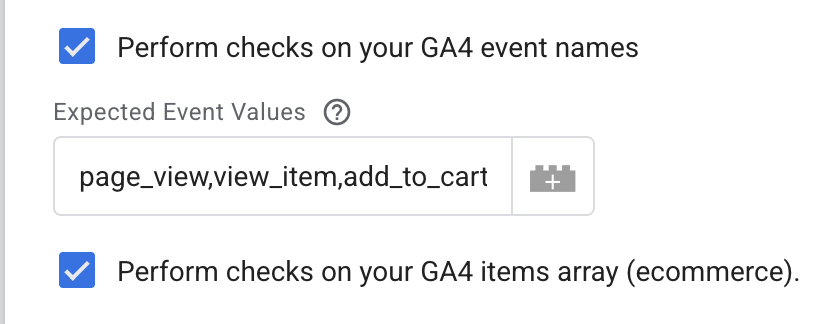 Argos Tag Template
Argos Tag TemplateIt seems like I prematurely announced the grand finale of my series about the GTM Server-Side (sGTM) Pantheon in my latest blog post in that series.
After all, it turns out that the sGTM Pantheon is a gift that keeps giving. Lately, the (apparently) tireless Google engineers from the gTech Ads team added not one, not two, but three new templates to the gallery and, by doing so, guiiding my pen back to paper.
One good thing came out of these unexpected additions to the Pantheon already: I might have understood why the Google team chose references to Greek mythology! Besides the twelve principal deities, there are literally hundreds of other gods and goddesses, titans, nymphs, and satyrs (you might want to check out this website to get a complete overview). So, it’s definitely enough to have a good number of names to choose from for all the future potential sGTM templates to come.
But there’s more to it. With the latest additions, the Google team introduced a new category of solutions to the Pantheon.
The Pantheon solutions so far have been focused on either enriching the data flow in real -time with data points from Firestore, Google Sheets, or Vertex AI or sending data points to destinations like BigQuery, PubSub, or Google Sheets.
The three new tag templates are targeted at making sure that all the potential data flows and orchestrations running on sGTM are fully functional and can be monitored on an ongoing basis.
If you’ve followed me for some time already, you might have read my previous blog post on why you should monitor your sGTM data flows. If not, I highly recommend it as an introduction to this post.
But now, without further ado let me briefly introduce the latest tag templates to you:
Let’s take a closer look at these solutions individually to see how they can help us in our day-to-day work.
In Greek mythology Argos is a many-eyed giant serving as Hera’s perpetual watchman. Like its namesake the tag template is designed to constantly overseeing your sGTM setup. In particular, the tag allows you to perform a set of basic checks on top of your GA4 data stream and log any issues that might arise into GA4, BigQuery, and/or Cloud Logging. The tag template allows you to specify a set of expected values for certain data points that are then compared with the actual data that is sent to the sGTM container with a given GA4 event.
 Argos Tag Template
Argos Tag Template
As you can see from the tag screenshot above, the out-of-the-box checks cover:
page_location against a comma-separated list of allowed domains for your GA4 measurement ID.event_location.country value against a comma-separated list of allowed countries for your GA4 measurement ID. (This requires serving Google scripts from sGTM)x-ga-measurement_id value against a comma-separated list of allowed GA4 measurement IDs.x-ga-dma value against a dropdown (1, 0, or both). x-ga-dma = 1 is expected for EEA traffic and 0 for non-EEA traffic. GA4 applies different data controls to EEA traffic.x-ga-gcs value against a comma-separated list of allowed values (e.g., G101, G111, etc.). (This requires a Consent Mode implementation. See here for a full list of potential value expressions.)The reason that these are chosen is that faulty values for these particular gTag settings can cause potentially large discrepancies within your GA4’s reporting, bidding, audiences and negatively impact your business’ other marketing platforms as well (e.g., Google Ads). The side effects range from faulty attribution, non-functional audiences, or even missing/wrong data in your GA4 property.
Should you be interested in the details, I can recommend checking out the
README.mdfile in the Github repository, which provides a more detailed overview of the implications.
The underlying mechanics of the template are quite straightforward. For the checks itself, the template takes advantage of the getEventData API to obtain a specific value from the data made available via an incoming event. This value is than evaluated against the template’s inputs and either passes the test - meaning we are dealing with an expected value - or it fails, and a respective error message is created.
See the below excerpt from the tag’s Sandbox JS code to get an idea of this process:
1
2
3
4
5
6
7
8
9
10
11
12
13
14
15
16
17
18
19
20
21
22
23
24
25
26
27
28
/*
EXEMPLARY CHECKS PERFORMED BY THE ARGOS TAG TEMPLATE
*/
//Set up variables to track errors
let errorMessage = "Errors: ";
let shortErrorMessage = "";
let numErrors = 0;
//Check domains
if(data.expectedDomains) {
const requestDomain = extractDomain(getEventData("page_location"));
if(!isValueInList(data.expectedDomains, requestDomain)) {
errorMessage += "Request sent by unlisted domain. Expected: " + data.expectedDomains + " but got " + requestDomain + ". ";
shortErrorMessage += "domains;";
numErrors++;
}
}
//Check expected GA measurement IDs
if(data.expectedGAMeasurmentIds) {
const requestGaMeasurementId = extractDomain(getEventData("x-ga-measurement_id"));
if(!isValueInList(data.expectedGAMeasurmentIds, requestGaMeasurementId)) {
errorMessage += "Request sent by unlisted GA4 Measurement ID. Expected: " + data.expectedGAMeasurmentIds + " but got " + requestGaMeasurementId + ". ";
shortErrorMessage += "ga4measurmentIds;";
numErrors++;
}
}
Now, that the tag has evaluated the event data object against the specified set of rules, it needs to make potential error messages available to us for further analysis or alerting. For this purpose, the event gives us three options (s. Actions group in the tag’s screenshot above):
shortErrorMessage (s. code snippet above)).
The Argos template gives you the same modularity and flexibility I’ve mentioned in previous sGTM Pantheon templates. In the example below, I’ve enhanced the standard configuration by adding two custom checks: one that validates incoming event names against my predefined whitelist, and another that ensures the items array maintains proper formatting with at least an item_id or item_name parameter present.
 Argos Tag Template Modified
Argos Tag Template Modified